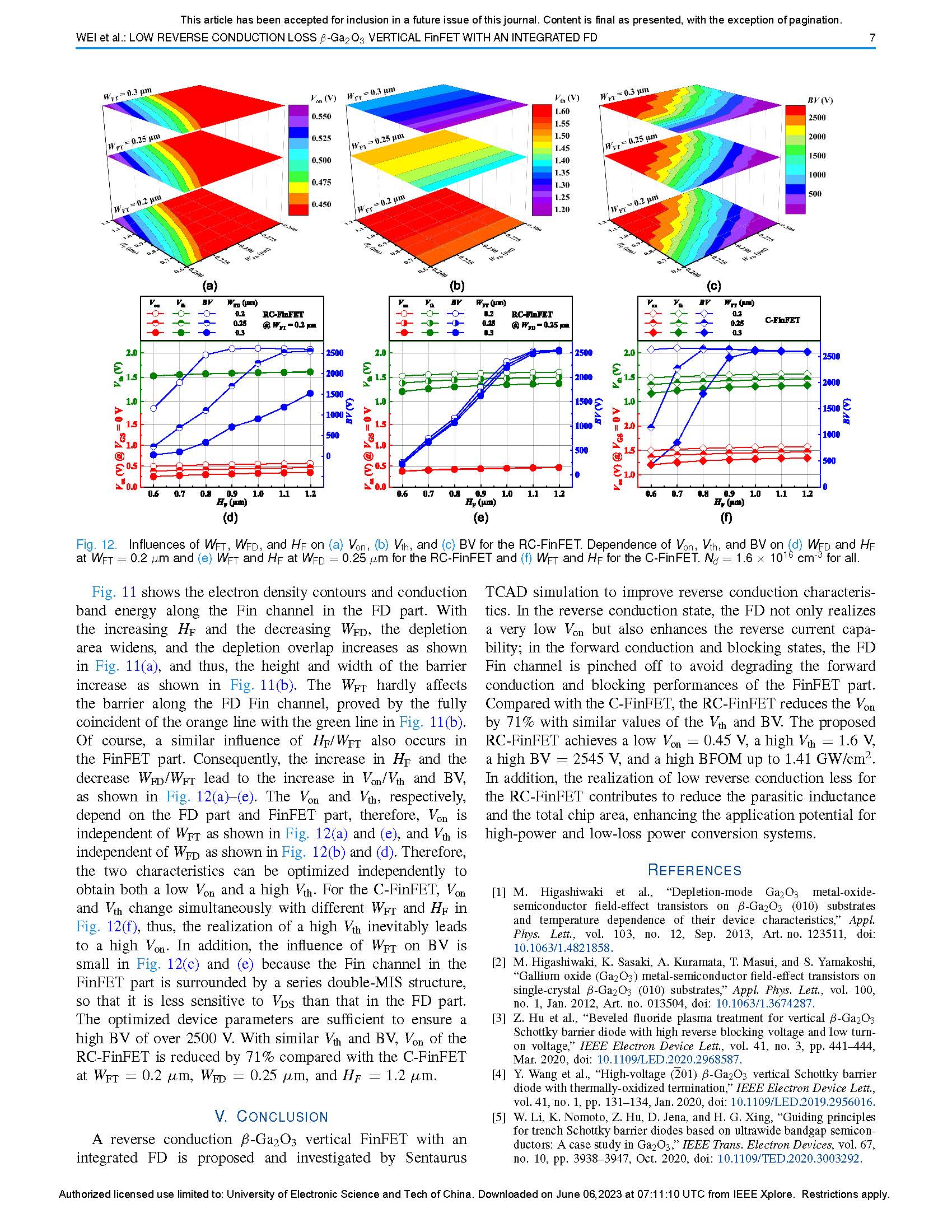
【International Papers】Low Reverse Conduction Loss β-Ga₂O₃ Vertical FinFET With an Integrated Fin Diode
日期:2023-06-19阅读:525
Researchers from the Power Integrated Technology Laboratory at University of Electronic Science and Technology of China have published a dissertation titled " Low Reverse Conduction Loss β-Ga2O3 Vertical FinFET With an Integrated Fin Diode " in IEEE Transactions on Electron Devices.
Abstract
In this work, a low reverse conduction loss β-Ga2O3 vertical FinFET (RC-FinFET) with an integrated Fin diode (FD) is proposed, and its electrical characteristics are studied and analyzed by Sentaurus TCAD simulation. As shown in Fig. 1(a), the RC-FinFET consists of FinFET part and FD part, and achieves MIS-like conduction/blocking characteristics by the depleting/accumulating behaviors. At zero bias, owing to the work function difference between the metal and β-Ga2O3, both Fin channels are pinched off by the depletion effect from sidewalls of the MIS structure, realizing normally-off operation. Both in the forward on-state and off-state, the FD part is pinched off and hardly affects the threshold voltage (Vth) and breakdown voltage (BV). The pinch-off effect allows the Ohmic contact anode to take place of Schottky contact anode in the FD part, thus, the RC-FinFET obtains a very low reverse turn-on voltage (Von) due to the junctionless FD. As the reverse bias further increases, the electron accumulation layers are formed along the two sidewalls of both Fin channels to improve the reverse current capability significantly. Compared with the conventional FinFET (C-FinFET) without the integrated diode, Von and Vth depend on the FD part and FinFET part of RC-FinFET, respectively, thus, the forward and reverse conduction characteristics can be optimized independently to obtain both a low Von and a high Vth. As shown in Fig. 1(b), the proposed RC-FinFET achieves a very low Von=0.45 V, being independent of gate bias. Also, the RC-FinFET achieves a high Vth = 1.6 V, a high BV = 2545 V, and a high BFOM up to 1.41 GW/cm2. In addition, compared to a FET externally connecting a freewheeling diode, the realization of low reverse conduction less for the RC-FinFET contributes to reduce the parasitic inductance and the total chip area, enhancing the application potential for high-power and low-loss power conversion systems.

Figure 1. (a) Structural diagram of RC-FinFET; (b) Comparison of reverse conduction performance between RC-FinFET and C-FinFET.
Paper Link:https://ieeexplore.ieee.org/document/10130497










